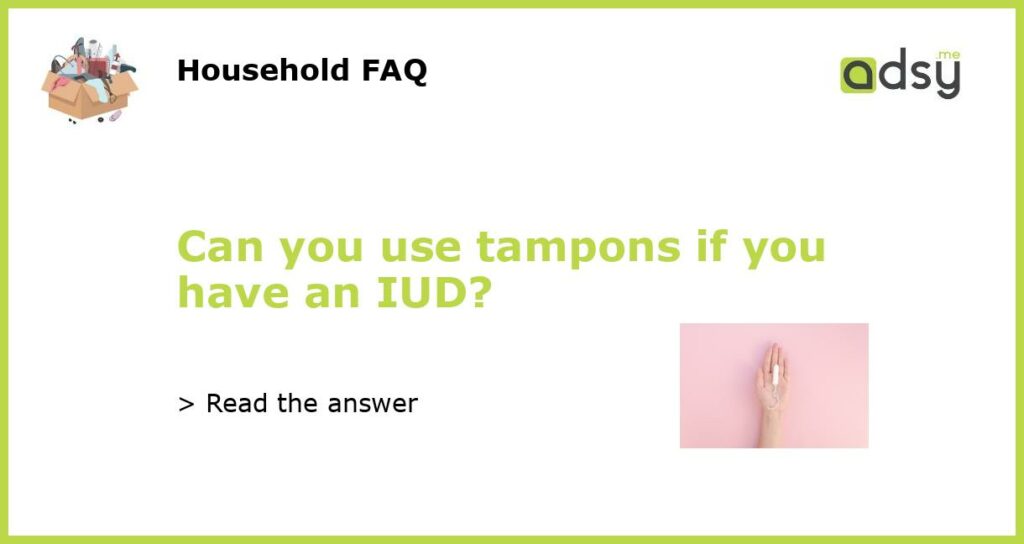What is an IUD?
An intrauterine device (IUD) is a small T-shaped device that is inserted into the uterus to provide long-term contraception. There are two main types of IUDs: hormonal and non-hormonal. Hormonal IUDs release a small amount of progestin, a synthetic form of the hormone progesterone, which helps prevent pregnancy. Non-hormonal IUDs, also known as copper IUDs, have a small copper wire wrapped around the base of the device, which creates an environment that is toxic to sperm, preventing fertilization.
How do tampons work?
Tampons are feminine hygiene products that are inserted into the vagina to collect menstrual blood. They are made of absorbent materials, usually cotton, and come in various shapes and sizes. Tampons work by expanding in the vagina to create a barrier that prevents menstrual blood from leaking out. They are typically used during menstruation and need to be changed regularly to prevent the risk of bacterial infection.
Possible risks of using tampons with an IUD
Using tampons with an IUD may pose some risks, especially if not done correctly. The main concern is the possibility of dislodging the IUD or causing it to come out altogether. This is more likely to happen if the tampon string gets caught on the IUD strings and is pulled when removing the tampon. Additionally, the forceful removal of a tampon can also cause the IUD to shift or become partially expelled from the uterus.
Another risk is the potential for increased menstrual flow while using tampons, which may occur due to the pressure exerted by the tampon against the cervix. This increased flow can lead to an increased risk of heavy bleeding or clotting, which may be uncomfortable or painful. It is important to note that these risks are relatively low, but it is essential to be aware of them and take precautions.
Tips for using tampons with an IUD
If you have an IUD and want to use tampons during your period, there are a few tips to keep in mind to minimize the risks:
- Consult with your healthcare provider: Before using tampons with an IUD, it is always a good idea to consult with your healthcare provider. They can provide personalized advice based on your specific situation and ensure that using tampons is safe for you.
- Check the IUD strings: Before inserting a tampon, make sure to check that the IUD strings are still in place. If you can feel the strings or if they seem to be longer or shorter than usual, contact your healthcare provider as these may be signs of a possible issue with the IUD.
- Use the lowest absorbency tampon: Opt for tampons with the lowest absorbency possible to minimize the risk of the tampon expanding and pulling on the IUD strings. It is also a good idea to use tampons for a shorter duration and change them more frequently.
- Be gentle when removing the tampon: When removing a tampon, it is important to be gentle and avoid pulling on the strings. Instead, try to grasp the tampon itself and gently remove it without tugging on the strings. If you feel any resistance, stop immediately and consult with your healthcare provider.
- Consider alternative menstrual products: If you are concerned about the risks associated with using tampons with an IUD, there are alternative menstrual products you can consider, such as pads or menstrual cups. These do not pose the same risk of dislodging the IUD and can be used safely alongside an IUD.
Remember, it is always best to consult with your healthcare provider before making any changes to your contraception or menstrual care routine. They can provide personalized advice and ensure that you are using tampons or other menstrual products safely with an IUD.






